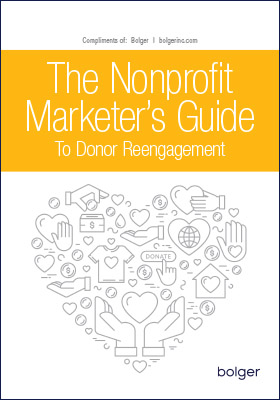On the most basic level, customer rewards programs are a retention strategy designed to motivate consumers to keep buying from their brand instead of the competition. When done well, they do much more.
By Tim Sweeney
W hile there are plenty of brands who have solved the loyalty program riddle and reaped the rewards, many companies are still missing the boat.
Robyn Simpson has 20 years of experience as a marketing consultant and specializes in loyalty programs. She consults with businesses on every area of program development, from strategic partnerships, member engagement, risk assessments, and compliance to the development of stakeholder engagement, customer experience, and customer value propositions. She says that too many brands are simply not viewing marketing as a complete system from acquisition to retention.
“Traditionally, businesses tend to spend a disproportionate amount of marketing budget on acquiring new customers rather than retaining existing customers,” Simpson explains. “We all know it costs more to attract new customers, yet brands are still behind the eight ball when it comes to retention marketing. The irony is that retention (loyalty) marketing can provide valuable insights to improve acquisition strategies and gain efficiencies, yet many brands don’t have a retention strategy at all.”
The reasons for creating and executing a loyalty or rewards program are obvious. First, loyal customers are repetitive customers. Second, they spend at least 33 percent more with your brand than new customers do and are 50 percent more likely to try a new product of yours. These loyal customers also tell their friends and colleagues about their favorite brands, which drives referral traffic and word-of-mouth marketing. Finally, as Simpson mentioned, it costs five times more to acquire new customers than it does to retain current ones. Of course, none of this means you should give up trying to acquire new customers and depend completely on the ones you have, but it certainly makes the case for keeping your rewards program up-to-date and relevant so that your best clients don’t go wondering off elsewhere. Today, with so many brands offering rewards programs that deliver real value to customers, losing revenue because you don’t offer privileges, promos, and perks is a real threat.
”The irony is that retention (loyalty) marketing can provide valuable insights to improve acquisition strategies and gain efficiencies, yet many brands don’t have a retention strategy at all.
“In general, programs have evolved from card-based programs focused mostly on transactions to fully integrated loyalty initiatives within the larger marketing ecosystem, where transactional and emotional loyalty are the focus,” says Shirley King, who has 15 years of loyalty program experience in various capacities with brands such as Kimpton Hotels and IHG Hotels and Resorts. “The loyalty program has always been a mechanism to deliver the outcome. Now, with the focus on experience and emotional loyalty, the transactional part is table stakes with an eye on leveraging all the integrated real-time data to elevate the experience and create brand love.”
What data should you be evaluating? King says that aside from the basics (contact info, communications preferences, and purchase history), the golden record of actionable data is information that supports hyper-personalization and informs how customers are behaving across channels.
“These preferences related to your product or service allow you to target customer segments that have intent,” King says, “and behavior data lets you offer a seamless experience and bring in customer satisfaction and customer service to make sure you close the loop.”
If a strong loyalty program can help form the basis of a retention marketing strategy—and build brand love, as King says—it stands to reason that it can also be a marketing tool to recruit new customers and then keep them as well. To put it simply: your retention marketing strategy can also inform your acquisition strategy. The Pareto principle (named for Italian economist and sociologist Vilfredo Pareto) theorizes that 80 percent of a company’s future revenue will come from just 20 percent of existing clients, which means most businesses have a small number of high-value clients and a large number of low-value clients. Simpson says that by targeting high-value, high-potential clients, it’s possible to reverse that ratio and instead use marketing resources efficiently, aiming to make 80 percent or more of your clients high value. To implement this strategy, you’ll need to start with good customer data.
Three Common Mistakes to Avoid
As a specialist in retention and loyalty marketing, Robyn Simpson has seen plenty of great marketing and more than a few misses. We asked her to identify where brands are missing the boat in the area of brand loyalty programs.
Not putting the customer first—Too often, brand loyalty programs are designed and driven to meet business objectives as opposed to being truly customer-centric. Loyalty programs by nature should be customer led, yet many brands fail to implement robust customer research or understand the voice of the customer before launching a program.
Being a copycat—As a result of the tendency for brands to outsource their loyalty program to an agency, there is a lack of innovation that leads to a gluttony of “me too” look-alike programs with little or no point of difference. It takes considerable resources and expertise to run a loyalty program in-house, but it offers the flexibility to innovate versus having to fit your program inside a prebuilt box. Without a point of difference, your program will not generate loyalty, and customers will jump to the next program to save $1.
Taking a short-term outlook—Start your program with a long-term strategic view and risk assessment. Successful loyalty programs must continue to innovate and, therefore, need to grow and change to meet changing customer expectations. Be sure to do complete risk assessments for your original loyalty program and for each modification to your program.
“Identify your loyal, high-value customers, then perform data analysis to understand the characteristics that can be targeted as part of your acquisition strategy, so you are focusing on attracting the highest-value clients,” Simpson says. “At the same time, you want to implement loyalty marketing strategies and programs to retain your high-value customers to increase their lifetime value. The beauty of this strategy is that by prioritizing your customer groups, you can strategically allocate budget and resources to attain the best ROI. But this strategy requires a customer-centric approach, which requires hypertargeting and personalization.”
“Consider your loyalty program an opportunity to show your best customers how important they are,” Simpson says. “Deliver benefits that are so valuable that they would be foolish not to join and stick with you.” She stresses that loyalty marketing is designed to thank and reward customers for doing business with a brand—and not just once, but repeatedly. After all, your customers are choosing between you and your competition.
“Showing gratitude recognizes this and can reinforce that they made a good decision choosing you,” Simpson says. “Doing so can significantly reduce post-purchase dissonance, and when done effectively, it can evoke an emotional connection between the customer and the brand. Emotional connections strengthen a relationship and increase the likelihood the customer will return to purchase again and/or tell others of their experience.”
So, how can you show gratitude? The list is never-ending. The best approach for your business will depend on a range of factors, including who your customers are, their preferences, the value and frequency of purchase, and how and where your clients prefer to engage with you.
The goal of many loyalty programs is to deliver discounts to people who make regular purchases. The best loyalty programs, however, don’t require customers to spend piles of cash only to be rewarded with trivial discounts.
”Once you have chosen how you will set up your loyalty program, get creative with the activations you make available to your members.
“The key to the loyalty game is to be different from the competition and offer true value to your customers,” Simpson explains. “Once you’ve listened to your customers and understand what they see as value, there are a few strategies you can use to ensure the perks truly drive loyalty and don’t cost the earth. Tiered programs, for example, encourage add-on sales or desired actions such as referrals. They can also provide extra data points—like competitors’ information or customer preferences—that are difficult to obtain without offering a benefit.”
Once you have chosen how you will set up your loyalty program, get creative with the activations you make available to your members. Among Simpson’s favorites are rewarding customers for providing insights via one-question surveys; offering flash sales with limited unique offers; auctioning off points; segmenting offers and targeting groups based on consumer insights (such as offering relevant value for early adopters of a new product or service); relying on internal customer service or sales staff by offering incentives to promote membership enrollment or renewal; and rewarding behaviors such as referrals, social tagging, or mentions.
King believes that customer acquisition via referral programs is another great way to incent your loyal customers to help bring in new ones. The key, she says, is to have a solid offer where there is a mutually beneficial value proposition—the member gets value from the brand for their efforts and is able to give something of value to the new member they are bringing in. Test and learn and make sure you are reaching out to the right customers (typically your most satisfied) with the right offer, and track conversions.
“Keep those most passionate members
in the happy zone with a strong brand narrative, so they can potentially bring in like-minded customers with similar spending habits,” King says. “Give them compelling content to share with friends to drive consideration. Inspire your social media team to embrace loyalty culture and understand its importance to the business. Brand ambassadors often provide their own content. Leverage this and apply member recognition and rewards in social channels.” Simpson adds, “Instantly offering an incentive to purchase again is a signal that you care more about generating sales revenue rather than giving a sign of gratitude.”
Today’s customers are cautious about sharing information, so it’s important to only collect data points that you will use to deliver relevant value to them as well as communicate how they will benefit from providing their information to you. “Loyalty programs are easy targets for fraudsters and have become the target of many privacy breaches and other fraudulent activities,” Simpson cautions. “You need to ensure there are the appropriate steps in place to provide security for your customers and your business and communicate that you take your customers’ data privacy seriously. The increased compliance demands of the General Data Protection Regulation (GDPR) and associated penalties of breaches are a big risk to be considered.”
Want a helpful marketing guide?
Our helpful marketing guide will be mailed to you for FREE.
Get a Free Marketing Guide








